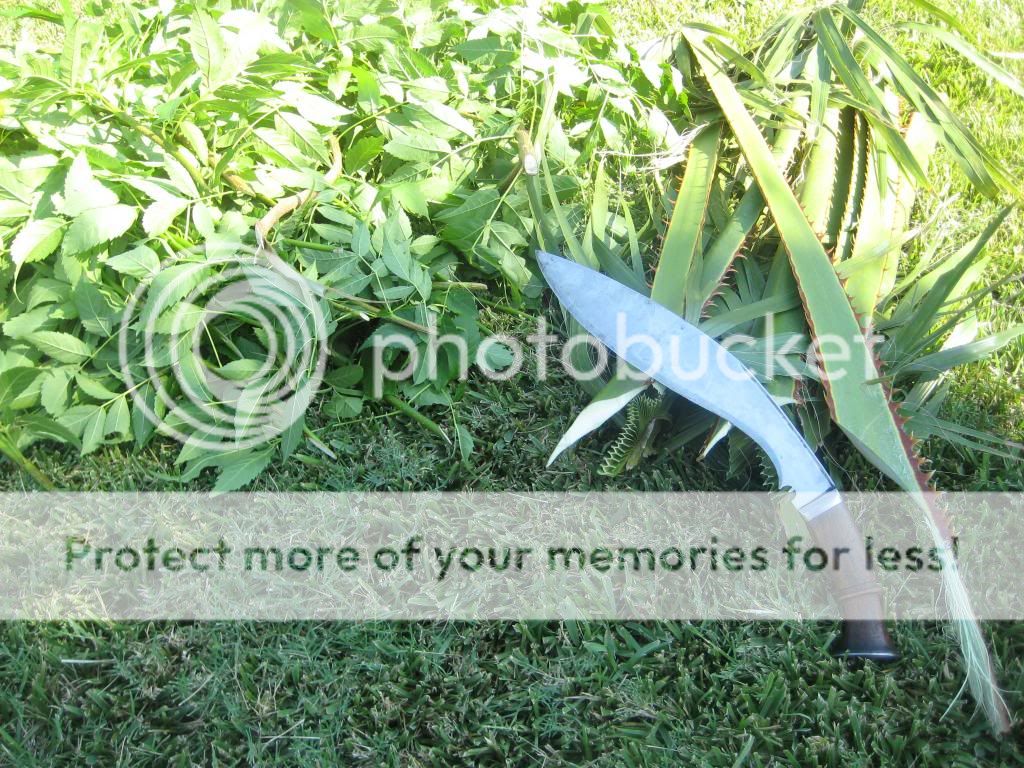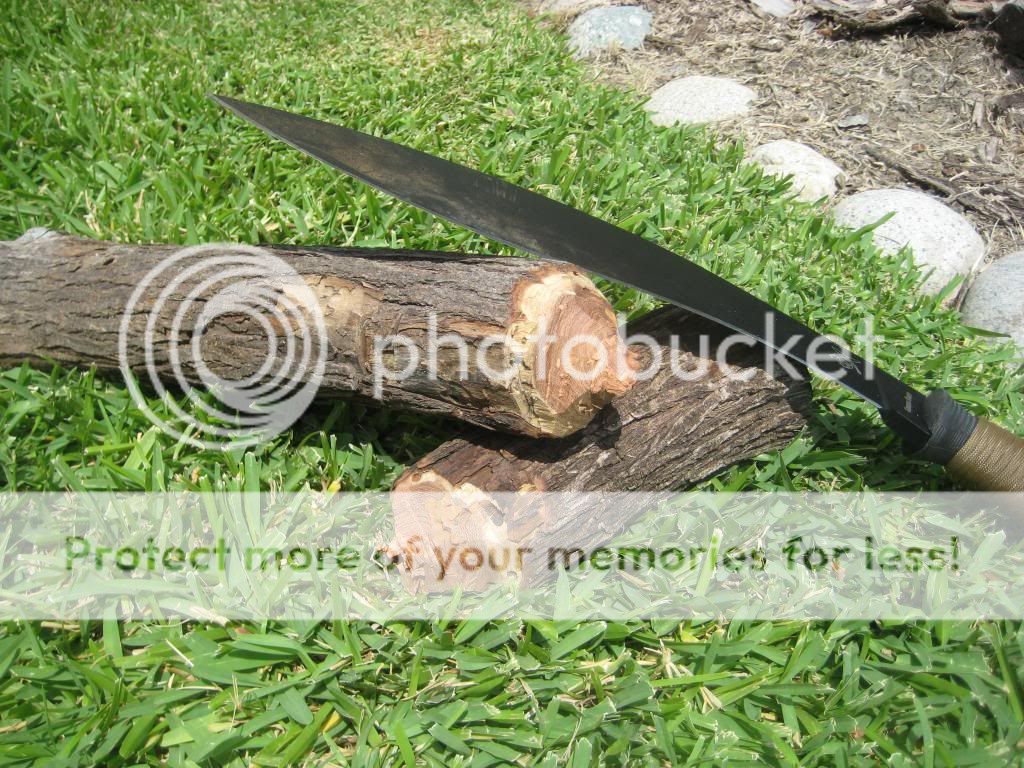- Joined
- Sep 19, 2011
- Messages
- 1,945
You look more macho with a big choppa!
The BladeForums.com 2024 Traditional Knife is available! Price is $250 ea (shipped within CONUS).
Order here: https://www.bladeforums.com/help/2024-traditional/
. The big difference in cutting ability comes with axes where you traditionally use two hands and as a result can apply greater force at the cut.
You look more macho with a big choppa!
I think the answer also lies on where do you intend to use your tools, and the skill proficiency at each tool.
A machete/big knife might be more desirable than an axe/hatchet in jungle area, whereas if you need to chop a lot of wood, a hatchet might be more desirable than a big knife. If a person has never chopped with a hatchet, I think a big knife with smaller bite might be a little safer to yield.




A machete in the Ozarks won't last long battling blackberry vines, hardwood saplings, and hedge.
I think the answer also lies on where do you intend to use your tools, and the skill proficiency at each tool.
A machete/big knife might be more desirable than an axe/hatchet in jungle area, whereas if you need to chop a lot of wood, a hatchet might be more desirable than a big knife. If a person has never chopped with a hatchet, I think a big knife with smaller bite might be a little safer to yield.
I must say; I'm not too bad with a hatchet. But I have noted that it's pretty hard to bit with one unless the targets anchored (with is often not the case with outlying branches).
Anytime you are hacking away, you want your target to be anchored. Otherwise, you are wasting most of your energy and asking for injury. Trees are to be limbed at the trunk.
I appreciate that a knife can chop down a tree. I've done it. The point to remember is that most of these comparisons are done with green wood, filled with sap, and in warm seasons. Rarely deadwood, or when dormant.
I reread Kephardt's chapter on what tools to take into the North American wilderness, and in his day the knives were less than 8" long. If it was one individual camping in hardwoods, he suggested a tomahawk. If it was a group of four, the axe. A single individual could harvest enough dry deadwood from the standing forest to keep a decent cook fire going for days, and if needed, take down 6-12" saplings for shelter. The axe could handle larger trees, but the point is that there could be a division of labor - and rotation. Cutting up a large tree takes time and expends calories. I speculate that four out foraging for firewood could find plenty of it ready to gather in the same time it would take to cut up one large tree - which would need careful selection for it's ability to burn when wet. I've yet to see any species in deadwood that can't be used in some fashion, taking into account which ones burn quickly to nothing, and those that run to coals that burn all night.
Our history in America is pretty clear, the axe, hatchet, and hawk dominated when camping or clearing woodland. What has happened in recent times is to look at third world use of long knives because that is where most of those societies are geographically located. It's really a recent interest in our society to emulate them, but that doesn't mean they are the appropriate tool in our environment. I don't find references to someone batoning a cabin out of the wilderness to wait out a long winter - it would be a interesting accomplishment, but certainly one that stands alone.
